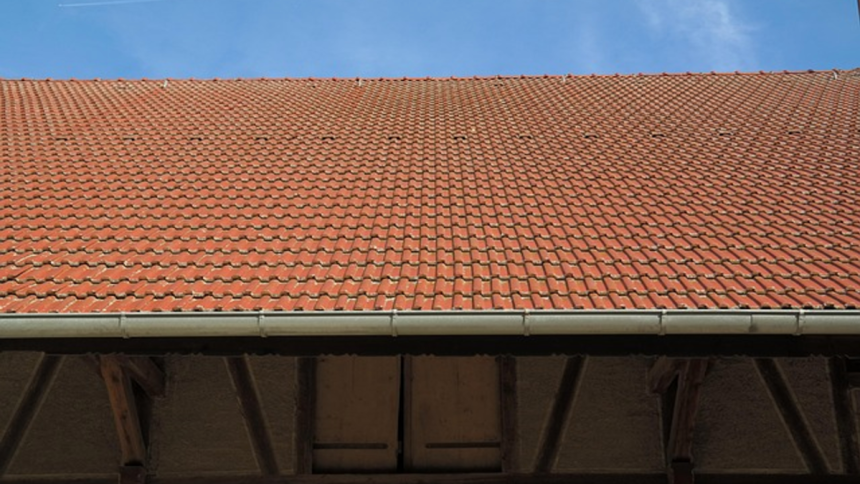Have you been cleaning your gutters more often than usual? Are there more blockages and leaks which you’re constantly repairing? If so, then you may be dealing with gutters that are worn beyond repair.
In this instance, locals are opting for the gutter replacement Melbourne roofers recommend for worn and damaged gutters and downpipes. You may think that repairing is the more affordable option. However, keep in mind that the cost of continuous repairs eventually adds up, which means it’s not always the best solution.
Gutters Will Let You Know When They’re Done
There are two facts you should know about your gutters. The first is that they won’t break from one day to the next. They will also always give you signs that they have reached the end of their lifespan. Here are the most common signs to keep an eye out for.
1. You See Signs of Water Damage
Properties in high rainfall areas will always be susceptible to a significant amount of water on the roof. You may even see water pooling around the base of your downpipes. In addition to this, narrower gutters can also remain fuller for longer. If you live in one of these areas, you will need to know the difference between excessive pooling and normal residual water.
Pooling water can lead to water damage. The following signs will highlight when pooling and excessive water are becoming a problem:
- Water stains at the top and bottom of downpipes
- Walls around the gutter remain wet long after the rain has stopped
- Dark mould spores form on the walls and gutters
- The paint on the gutters and surrounding walls has started peeling
Water that can’t drain effectively will cause rust and corrosion on your gutters and downpipes. If left untreated, these sections will eventually rust right through, causing severe leaking onto the exterior wall and into the foundation.
2. Gutters Have Started Sagging and Always Appear Full
There’s a common misconception that it’s normal for older guttering systems to start sagging. This is only true if your gutters and downpipes aren’t being cleared out as often as they need to be. Organic materials such as leaves, twigs, and sand accumulate in the gutters.
When gutters become full of this, it becomes impossible for water to drain out the way it should. This then causes the gutter to become heavy and eventually sag. Gutters will eventually start pulling loose from the wall or roof and could cause significant damage to your home. They could also pose a risk to anyone walking or standing under them.
Keep in mind that gutters that aren’t that old could still be repaired and reattached to the roof. While this is a much cheaper option, it’s only possible if there is no significant damage to the gutters or downpipes.
3. Your Gutters Will Start Splitting and Cracking
It’s no secret that Australian gutters take quite a beating from the harsh climate in most regions. It’s no wonder that they will eventually need to be replaced. Other factors, such as original materials used, quality of initial installation, the volume of rain, and how well the gutters have been maintained, will also determine how long your gutter system lasts.
A major red flag that your home needs gutter replacement is the appearance of cracks and splits at the top of the gutter, as well as the downpipes. While it’s true that you may be able to patch up a few odd cracks, the reality is that this will still affect the integrity of the whole gutter system.
Patching cracks may only work once or twice and shouldn’t be seen as a long-term solution. Ultimately, the gutters will start ripping loose, and this can lead to extensive damage to the roof and exterior of your home. When this happens, you’ll be looking at the cost of home repairs added to the cost of a new gutter system.
4. Gutters Are Always Overflowing
No matter how well you maintain gutters, they will occasionally overflow if there is significant rainfall. As with water drainage, it’s important to distinguish between regular overflowing and continuous leaking. When the level of overflowing doesn’t match the amount of rainfall, it’s essential to check if your gutters are blocked.
Use a hose or pressure washer to blast dirt and debris out of the gutters and downpipes. It’s also possible that your gutter system isn’t large enough to handle an increase in rainfall in your area. Gutter replacement is also the perfect opportunity to upgrade to a more effective system.
Final Thoughts
Every home needs a functioning guttering system to keep water from pooling on the roof and seeping into the roof cavity and interior of the home. Since your guttering system can last for many years before it needs to be repaired, you will need to keep an eye out for the signs that will let you know that it’s time to replace your gutters. Speak to your local roofer for a full assessment of your roof and gutters to know what you’re dealing with.
Lynn Martelli is an editor at Readability. She received her MFA in Creative Writing from Antioch University and has worked as an editor for over 10 years. Lynn has edited a wide variety of books, including fiction, non-fiction, memoirs, and more. In her free time, Lynn enjoys reading, writing, and spending time with her family and friends.















